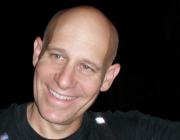Social influences and plasticity in sleep
Sleep is ubiquitous and crucial for animal health, but its adaptive function is still elusive. Over the last twenty years it has been established that sleep in invertebrates such as fruit flies and bees is similar to that found in mammals and birds. We are specifically interested in social influences on sleep and the adaptive functions of sleep. Our data suggest that around-the-clock active young bees show similar sleep stages as in foragers with a consolidated nightly rest. Young bees that experience the hive environment for only 24 hrs slept more than their individually isolated sisters. The influence of the hive did not require direct contact with other workers, the queen, or the brood. Taken these studies together with research in other labs suggest that honeybee sleep is more strongly regulated by social factors than by learning demanding tasks such as navigation. We try to better characterize the social factors that regulate sleep need and pattern. We hope that these studies will set the stage for research on the molecular and neuronal mechanisms underlying socially regulated plasticity in sleep. We have recently showed that bumble bee workers that care for the brood sleep very little, but with no evidence for a homeostatic compensation ("sleep rebound") after the brood is removed. Intersingly, workers gave up sleep in the presence of both larvae that need to be fed, and pupae that do not. Given that the tending workers do not care for their own offspring, these results suggest that plasticity in bumble bee sleep was shaped by social evolution.

A honeybee worker at deep (stage 3) sleep (Eban-Rothschild and Bloch, 2008)
Recent relevant publications
- Nagari M, Gera A, Jonsson S, Bloch G (2019) Bumble bee workers give up sleep to care for offspring that are not their own. Current Biology. In Press
- Eban-Rothschild A, and Bloch G (2015) The colony environment modulates sleep in honey bee workers. The Journal of Experimental Biology 218: 404-411. doi:10.1242/jeb.110619.
- Cheeseman JF, Winnebeck EC, Millar CD, Kirkland LS, Sleigh J, Goodwin M, Pawley MDM, Bloch G, Lehmann K, Menzel R, and Warman GR. (2012) General anesthesia alters time-perception by phase shifting the circadian clock. Proceedings of the National Academy of Sciences USA 109: 7061-7066.
- Eban-Rothschild A, and Bloch G. (2012) Social influences on circadian rhythms and sleep in insects. In Marla B. Sokolowski and Stephen F. Goodwin, editors: Advances in Genetics, Vol. 77, Burlington: Academic Press, 2012, pp. 1-32.
- Eban-Rothschild, A. D., Bloch, G. (2012) Circadian Rhythms and Sleep in Honey Bees. Chapter 1.3., p. 31-46 in "Honeybee Neurobiology and Behavior", A Tribute to Randolf Menzel. Galizia, Giovanni C.; Eisenhardt, Dorothea; Giurfa, Martin (Eds.), 492 pp. Springer Dordrecht Heidelberg London New York.
- Eban-Rothschild AD, Bloch G (2008) Differences in the sleep architecture of forager and young honeybees (Apis mellifera). Journal of Experimental Biology 211:2408-2416.

